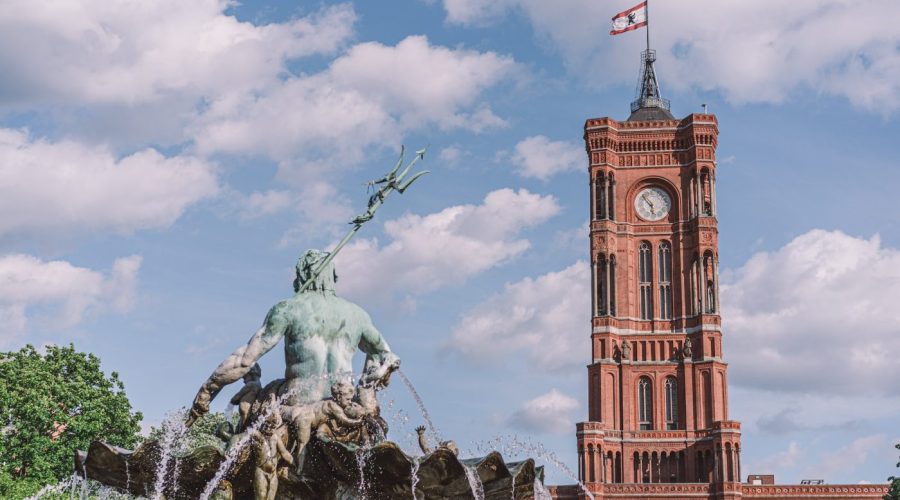Why are Rotes Rathaus and the Neptune Fountain Must-Visit Attractions in Berlin?
Welcome to Berlin, the vibrant capital city of Germany! Through its born and abode and everything, there are two significant landmarks to stop by, – City Hall – the Rotes Rathaus, and Neptune Fountain. In this article we will delve into the charm and importance of these iconic landmarks and see why they are no-brainer inclusions on your Berlin bucket list.
1. Rotes Rathaus (City Hall)
The Rotes Rathaus, that is “Red City Hall” in German, is a huge building found in the center of Berlin. Approaching this majestic build you can’t help but notice its stunning red brick period facade which is where it got it’s name from.
Here are a few key facts about the Rotes Rathaus:
- Dating from the end of the 19th century, the Rotes Rathaus (Red Town Hall) has been the seat of the mayor and government of Berlin.
- The structure fuses an unusual blend of architectural styles, implementing the features of the Northern Renaissance whooping with neo-Gothic fioritures.
- Don’t Forget the amazing tower for its exhilarating views of the city from its own observation deck. It’s worth the climb!
Whether you want to or not, politics, history, or just to admire great buildings, a tour of the Rotes Rathaus is a must see. Inside you’ll find several administrative offices, but the hidden gem is just outside in the adjacent park.
The Neptune Fountain
Situated close to the Rotes Rathaus, the Neptune Fountain is a spectacular view to see. This stunning bronze fountain centres around a bold statue of Neptune the Roman god of the sea standing high atop.
Here’s what makes the Neptune Fountain a captivating attraction:
- The fountain was created by Reinhold Begas and was inaugurated in 1891. As a symbol of Berlin’s architectural and artistic legacy, it serves.
- Neptune, holding trident, is surrounded by beautifully cut figurines of all sorts of sea creatures and a bunch of mermaids.
- It’s not just a visually stunning piece; the fountain also provides a cool respite on hot summer days!
Don’t forget to stop to appreciate the minute details and the craftsmanship that this historic wonder has.
2. How to Make the Most of Your Visit
Now that you’re excited to explore these landmarks, here are a few tips to make the most of your visit:
Plan your timing:
Think about visiting Rotes Rathaus and Neptune Fountain on weekdays when that part of the city tends to be less crowded.
Guided tours:
Booking a guided tour can make for a more enjoyable experience as when guided, this allows you to learn about the history, architecture etc, of these sites. In addition, you might find some hidden gems and stories you would not discover in your own.
Photography:
Don’t forget to bring your camera or mobile to capture the beauty of these attractions. The Rotes Rathaus and the Neptune Fountain make great photo opportunities, whether it is during the day or when nicely illuminated in the evening.
Explore the surrounding area:
Also worth your time is a stroll around the colourful neighborhood around Rotes Rathaus after you have visited. Take an unforgettable walk along the Spree River or explore the delightful Nikolaiviertel, Berlin’s oldest inhabited district.
In Conclusion
Rotes Rathaus and Neptune Fountain are an integral part of the highly historical and cultural aspect of the capital city of Berlin. Whether you’re interested in architecture, history, or you just want to see some magnificent landmarks, make sure to add these to your Berlin map. From the grandeur of the Rotes Rathaus to the Neptunbrunnen, they are definitely worth visiting. So, during your next visit to Berlin, don’t miss the opportunity to immerse yourself in the history and beauty that these landmarks have to offer!
Table of Contents



